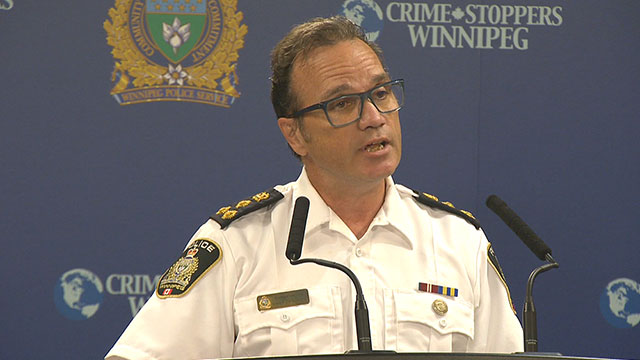
It’s being called “a move in the right direction” by the sister of Claudette Osborne, who has been missing in Winnipeg since 2008.
“This is good,” said Bernadette Smith of Friday’s Winnipeg Police Service (WPS) announcement to split from the Project Devote task force it shared with Manitoba RCMP in 2011.
“As long as they continue to work collaboratively.”
The task force, with eight police officers and six Mounties, was established to solve 28 cold cases, primarily involving Indigenous women. To date, it has shown one result for the murder of Myrna Letandre in 2014.
Winnipeg police Chief Danny Smyth said his service would be “consolidating its approach” to cases involving missing and murdered Indigenous women and girls (MMIWG) under a dedicated investigations branch.
The branch would be staffed by members of the homicide, counter exploitation, missing persons and internet child exploitation units.
“Devote will carry on; the Mounties want to retain that name,” Smyth said in an interview. “They will continue to investigate some files in their jurisdiction.”
Indeed, Manitoba RCMP confirmed as much in an email to APTN News.
“This does not change our approach to Project Devote; we will continue to investigate all cases thoroughly and will work closely with Winnipeg Police Services,” said spokesperson Cpl. Julie Courchaine.
“The RCMP will supplement Project Devote with additional officers from its Major Crime Services when necessary.”

(Bernadette Smith of Winnipeg is still searching for her sister Claudetts Osborne-Tyo. APTN file)
The task force also employed six RCMP civilian members and a family liaison officer – a role the chief has asked for funding to replicate in his new branch – and something Smith supports.
“It’s about how they work with families,” said the now-NDP MLA in Winnipeg, noting families have consistently pushed police services to do better here and across the nation when it comes to investigating hundreds of unsolved MMIWG cases.
“We’ve been calling for that since my sister went missing.”
Smyth said his members will “continue to liaise” with RCMP while “broadening” their own approach.
“When a missing person report comes in – we all hope we find the person alive and well – but there comes a certain point where it needs to transition (to homicide, for example) and I think having that ability to better co-ordinate will allow us to do that more rapidly.”
Jurisdictional issues –within and between police services – have long been blamed for the mishandling of certain cases and cited in several public inquiries in Canada.
Smith hoped to see that bureaucracy eliminated by having “four different silos in the police” work together.
It’s why the chief thinks this new model will be effective.
“Your approach on investigating a missing person is much different than investigating a homicide,” he said. “So knowing when to transition, just having people in the room, in the same space to be able to share information will give us the flexibility to more rapidly transition when we need to.”
On Twitter:









